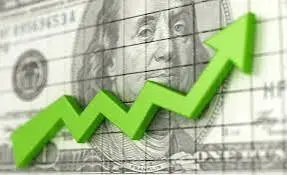How to Trade Forex and the Best Tools to Use
How to Trade Forex and the Best Tools to Use
Forex (foreign exchange) trading is one of the largest financial markets, with over $7.5 trillion in daily trading volume. Whether you're a beginner or an experienced trader, understanding how to trade forex and the best tools to use is essential for success.
What is Forex Trading?
Forex trading involves buying and selling currency pairs to profit from price fluctuations. The goal is to exchange one currency for another at an optimal rate. Commonly traded currency pairs include:
- Major pairs: EUR/USD, GBP/USD, USD/JPY
- Minor pairs: EUR/GBP, GBP/AUD, NZD/JPY
- Exotic pairs: USD/TRY, EUR/ZAR, USD/SGD
How to Trade Forex: A Step-by-Step Guide
Step 1: Learn Forex Basics
Before you start trading, understand key concepts like:
- Pips: The smallest price movement in forex (e.g., 1 pip = 0.0001 for EUR/USD).
- Lots: The size of a trade (Standard = 100,000 units, Mini = 10,000, Micro = 1,000).
- Leverage: Borrowing money from a broker to trade larger amounts.
Step 2: Choose a Reliable Forex Broker
Select a broker with:
✔ Low spreads and commissions
✔ Fast trade execution
✔ Strong security and regulation (FCA, CySEC, ASIC)
✔ User-friendly trading platforms
Step 3: Analyze the Market
Forex trading requires two types of analysis:
- Fundamental Analysis: Examining economic indicators like interest rates, inflation, GDP, and news events.
- Technical Analysis: Using price charts, indicators, and patterns to predict price movements.
Step 4: Open a Trading Account and Deposit Funds
Register with a broker, verify your identity, and deposit money using bank transfers, credit cards, or e-wallets.
Step 5: Choose a Trading Strategy
- Scalping: Short-term trading for quick profits.
- Day Trading: Opening and closing trades within the same day.
- Swing Trading: Holding trades for days or weeks.
- Position Trading: Long-term trading based on fundamental trends.
Step 6: Place a Trade
- Select a currency pair.
- Choose your trade size (lot size).
- Decide to buy (long) or sell (short) based on market analysis.
- Set a Stop-Loss (to limit risk) and Take-Profit (to lock in profits).
Step 7: Monitor and Exit Your Trade
Use trading tools and alerts to track price movements and exit trades at the right time.
Best Tools for Forex Trading
1. MetaTrader 4 (MT4) & MetaTrader 5 (MT5)
- Industry-standard platforms with advanced charting tools and automated trading.
- Supports expert advisors (EAs) for algorithmic trading.
- Available on desktop and mobile.
2. TradingView
- Web-based charting platform with customizable indicators.
- Social trading features to follow expert traders.
3. Forex Factory
- Provides real-time news and economic calendar.
- Helps traders analyze fundamental market trends.
4. cTrader
- Advanced platform with level-2 pricing and algorithmic trading.
- Best for professional traders.
5. Myfxbook
- Tracks trading performance and provides analytics.
- Allows users to copy successful traders.
6. Betapayy (For Seamless Fund Transfers)
- Secure and fast transactions for funding forex accounts.
- Low fees and instant payments for traders worldwide.
Final Thoughts
Forex trading offers great profit potential, but it requires education, strategy, and the right tools. Start with a demo account, master market analysis, and use the best trading platforms to improve your chances of success.
Are you ready to start trading forex? Let us know your experience in the comments!





